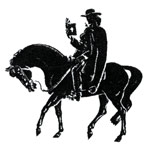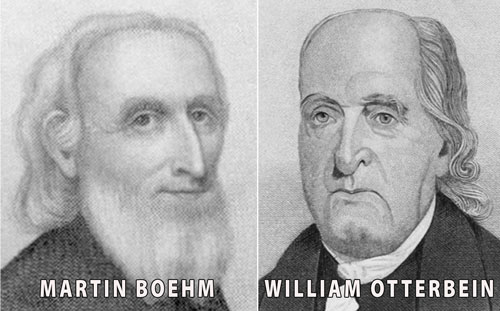When Did the United Brethren People Become a Denomination?
We start the clock there in Long’s Barn, 1767. But it was a loose, unorganized movement for many years.
The movement spread to include a bunch of German-speaking churches in Pennsylvania, Virginia, Maryland, and Ohio. In time, they saw the need for some organization and common standards. So in 1800, they began holding a yearly “General Conference.” The 13 ministers at that first conference, in a house, did two major things:
- Adopted a name: Church of the United Brethren in Christ.
- Elected Boehm and Otterbein as bishops. Both men, at the time, were in their mid-70s.
Made in the USA
The United Brethren church was the first denomination to actually begin in the United States. Other denominations existed at the time (Lutheran, Reformed, Mennonite, and others), but they were transplants from Europe. The United Brethren Church was truly Made in America.
Now It’s in Writing
Back in 1789, Otterbein wrote a “Confession of Faith” which outlined the basic doctrines to be followed. A similar Confession of Faith was officially adopted in 1815, and has not been changed since 1841. Today, it’s the basic document which unites all United Brethren around the world. Also in 1841, we adopted a Constitution. It’s been changed a number of times over the years, and is now the constitution for the United States National Conference. Each conference has its own constitution.

Circuit Riding Preachers
The church spread west, into Ohio and Indiana. Circuit-riding preachers, on horseback, carried the Gospel from community to community, organizing churches and doing whatever they could to tell people about Christ. Many of them were farmers who traveled around preaching in their spare time, sometimes supervising a circuit of up to 30 churches. Without pay. A preacher would travel for hours over rugged terrain on horseback getting to just one meeting (not quite like hopping in the car and driving across town). Very dedicated folks.
Back then, UB churches chose a “lay leader” to be in charge of the church between the preacher’s visits. The day the preacher came was always special and eagerly-awaited. Big crowds would gather for the service, and many people might commit their lives to Christ.
As time passed, preachers were encouraged to do what they do fulltime. The 1815 Discipline (our “operations manual”) set the annual salary for preachers at $80 for single ministers, $160 for married ones. They got a raise in 1837 (22 years later) to $100 and $200, and to $125 and $250 in 1853. How’s that for inflation?
Ministers barely scraped by, usually by farming or doing other things on the side. But the church grew rapidly under their tireless, dedicated leadership.







